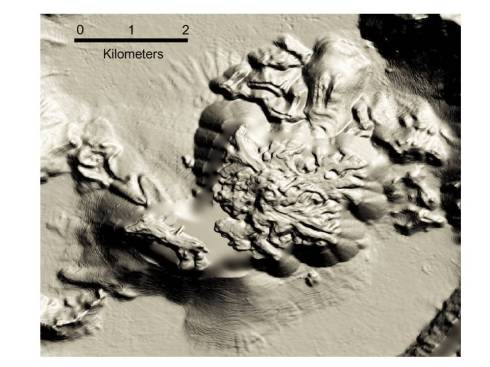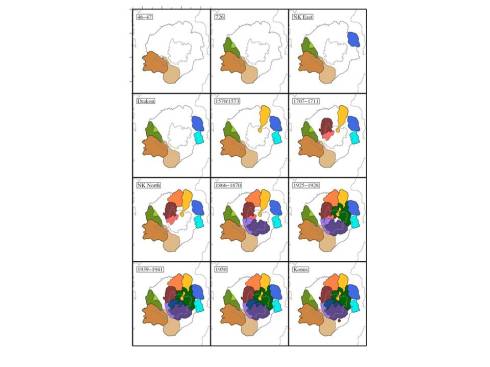
‘Where the hermit hangs his straw-clad cell‘. Front piece from Gilbert White’s ‘Natural History of Selborne‘, first published in 1789. White was one of a number of writers who described ‘the peculiar haze or smoky fog that prevailed .. in every part of Europe’ in the summer of 1783, following the eruption of Laki in Iceland. Image L0018513, Wellcome Library, London.
Book review: Island on Fire, Alexandra Witze and Jeff Kanipe
In Island on Fire, Alexandra Witze and Jeff Kanipe take the reader on a dramatic tour of volcanic eruptions, death and destruction. At its heart is the story of the great 1783-1784 Laki fissure eruption, one of the most significant historical eruptions of Iceland, which belched 120 million tonnes of sulphur dioxide into the atmosphere, and fifteen cubic kilometres of lava across southern Iceland in the space of nine awful months. Using Laki as the hook, the authors weave together first-hand accounts of the eruption and its many consequences, both locally and across the western world, with wider discussion of the present-day research on Laki and other eruptions.
The tale begins in Heimay, Iceland, in 1973, and the extraordinary example of a small eruption that literally reshaped an island community. The reader is then taken on a quick-fire tour of supervolcanoes; of classic eruptions and their human consequences, including Vesuvius, Tambora and Krakatau; to an exploration of some of the awful consequences of volcanic and evironmental crises in the 20th Century – from the tragedy of Lake Nyos and its carbonated lake, to the great smogs of 1950’s London.
The result is a compelling and readable account that is readily accessible and illuminating, and provides some fascinating examples of the intersections between volcanoes, humans and society. Island on Fire succeeds as a ‘popular science’ text, covering complex aspects of science with a light touch, and without getting bogged down in detail. At the same time, the endnotes provide ample routes into the current literature for the inquisitive reader, and this will make it a useful source book for students of geography, Earth and environmental science.
Link to the book
Alexandra Witze and Jeff Kanipe, 2104, Island on Fire: The extraordinary story of Laki, the volcano that turned eighteenth-century Europe dark, Profile Books, London. 224 pp. ISBN 978 178125 0044
Other links
Blog post by Alexandra Witze – Laki: the forgotten volcano
John Grattan and Mark Brayshaw, 1995, ‘An Amazing and Portentous Summer: Environmental and Social Responses in Britain to the 1783 Eruption of an Iceland Volcano’, The Geographical Journal, 161, 125-134
Gilbert White’s journal, The Natural History of Selborne
Notes
‘An amazing and portentous summer..’ is a slight misquotation from Gilbert White’s diary, first published in 1789.
Alexandra Witze kindly sent me a pre-publication copy of Island on Fire.


